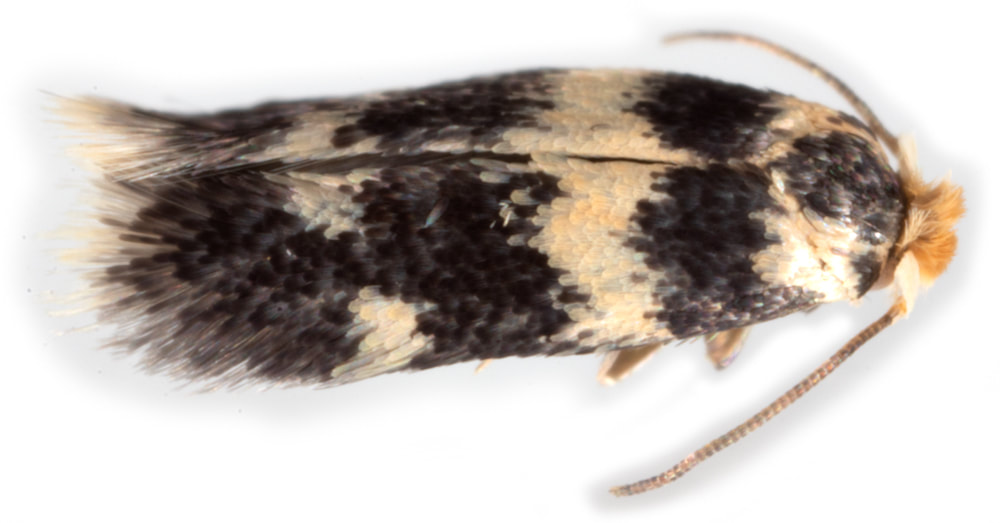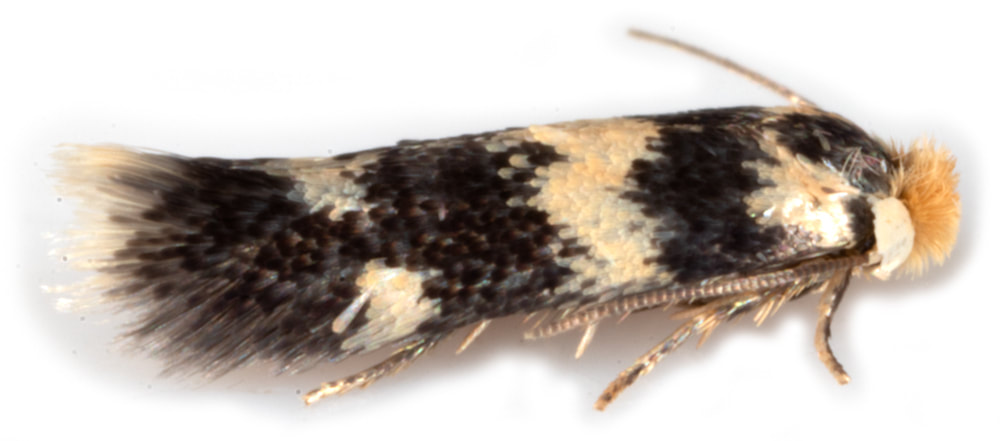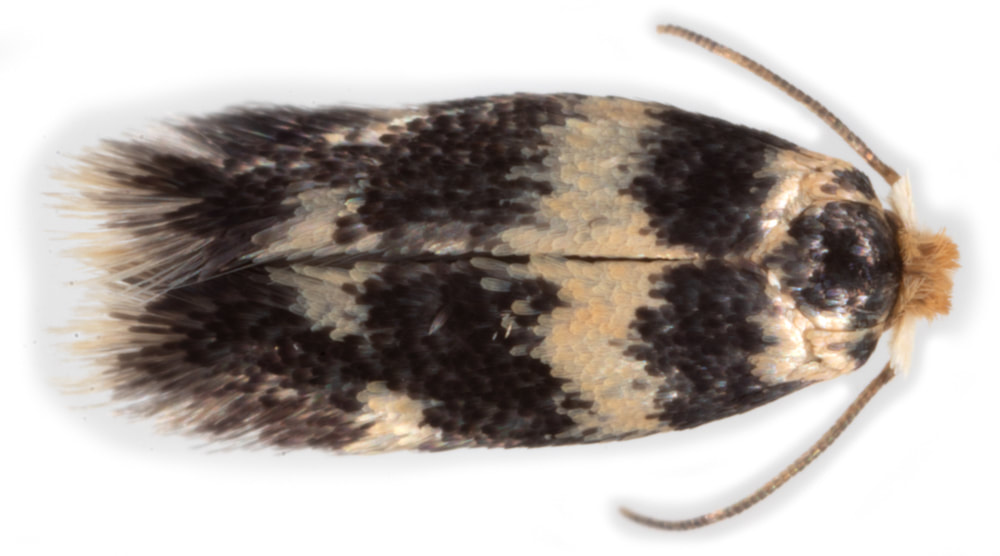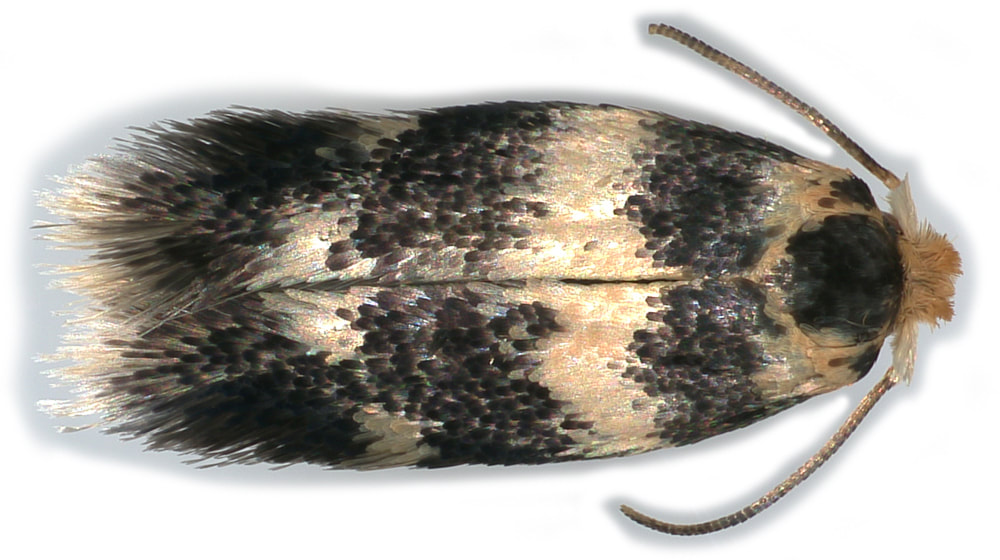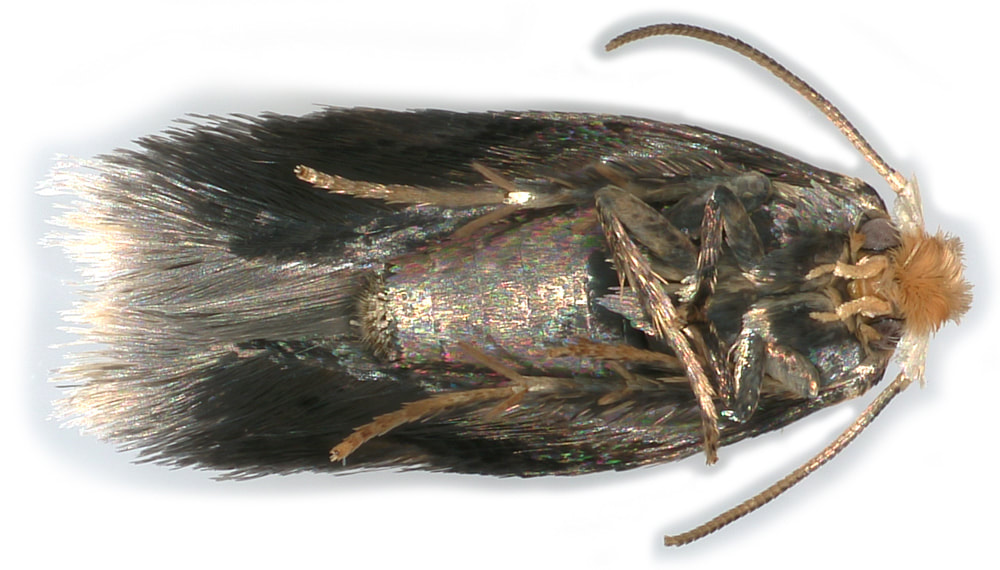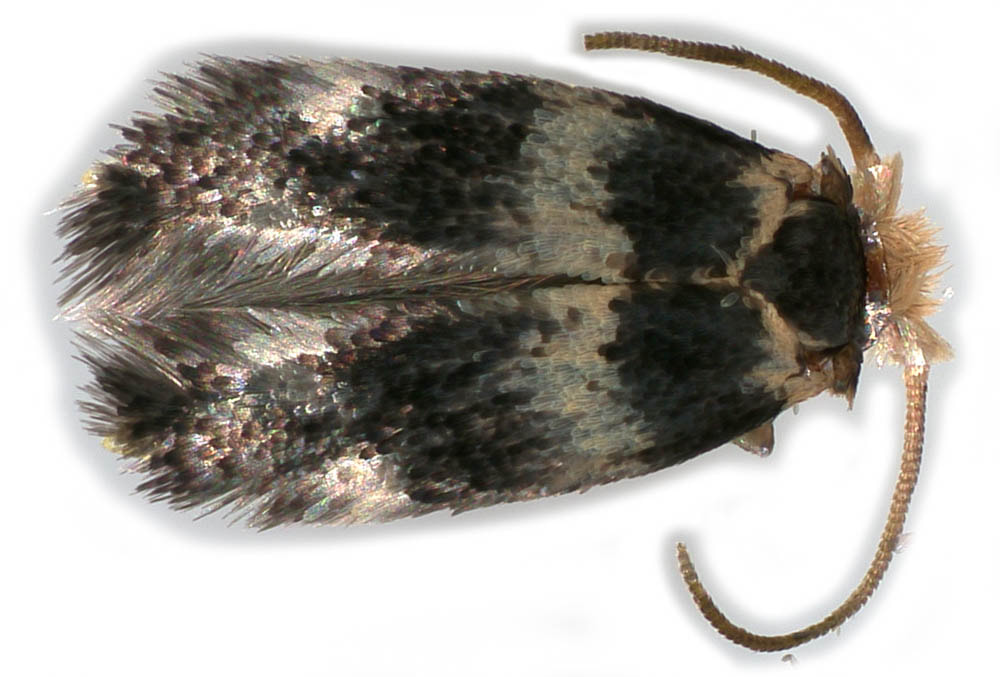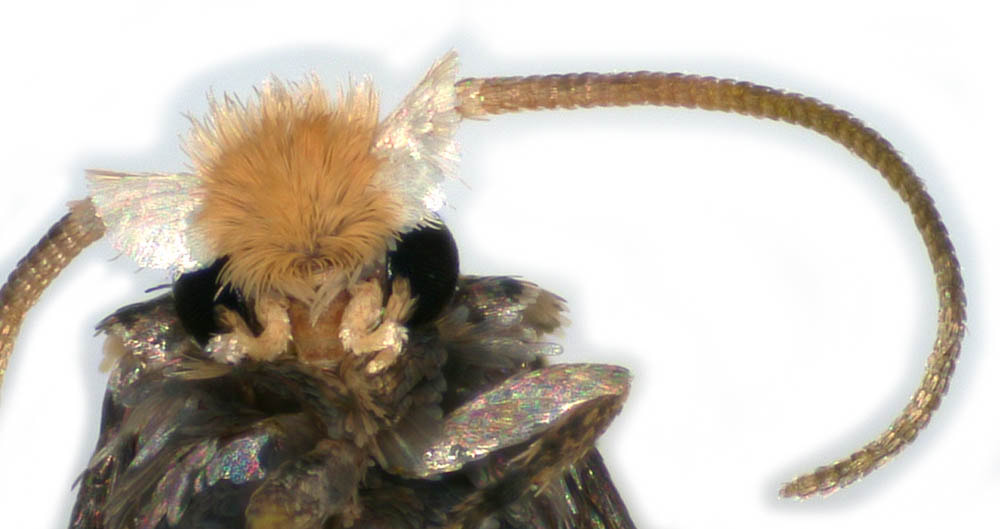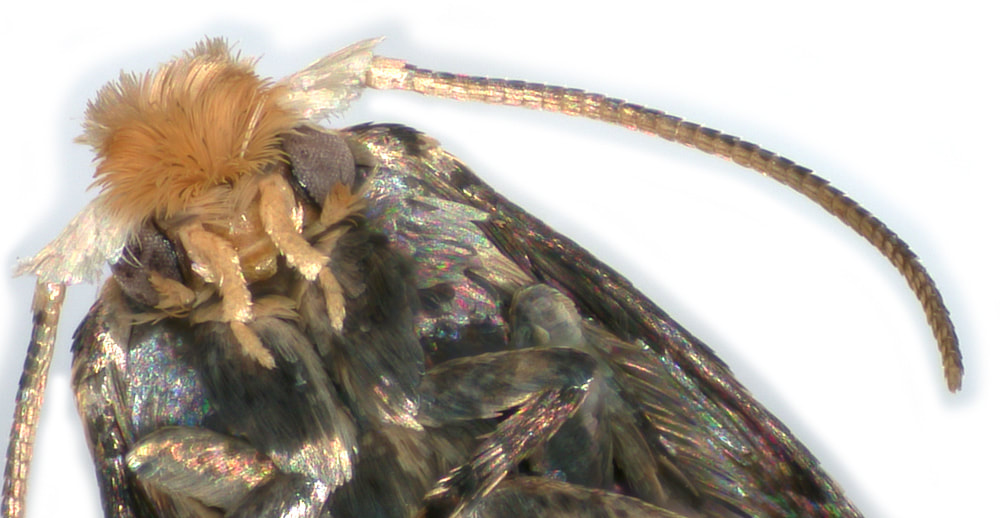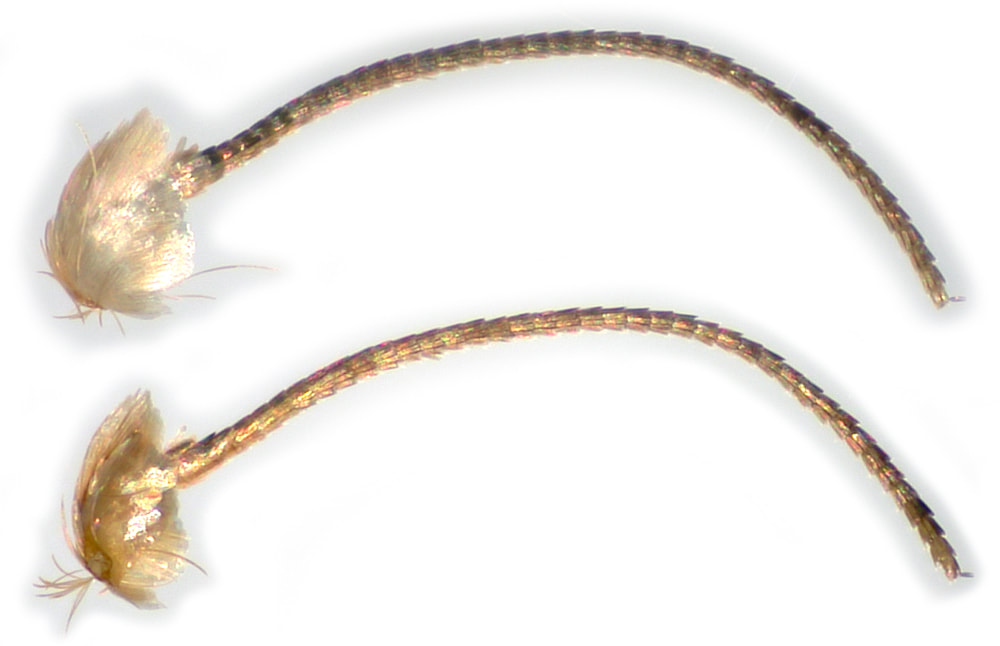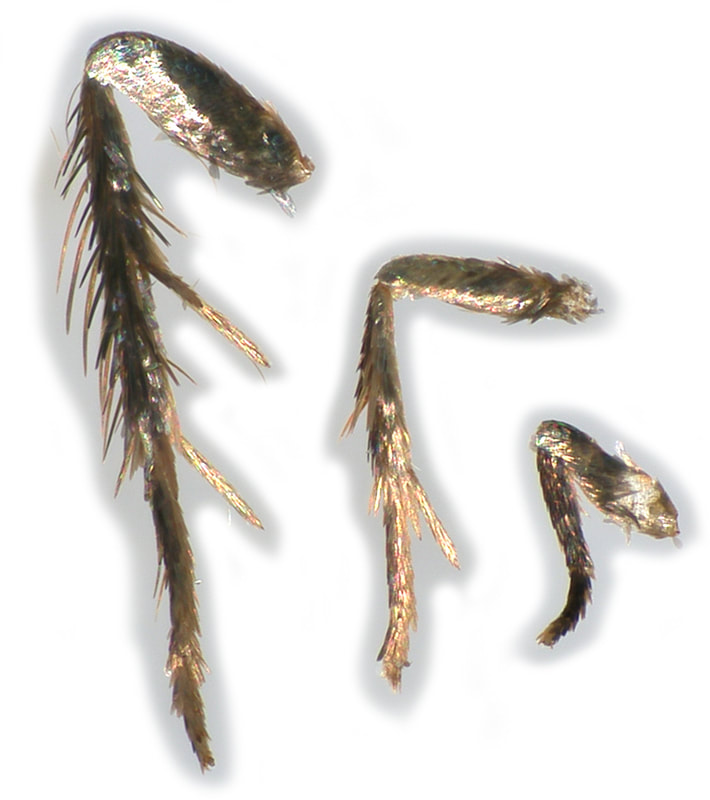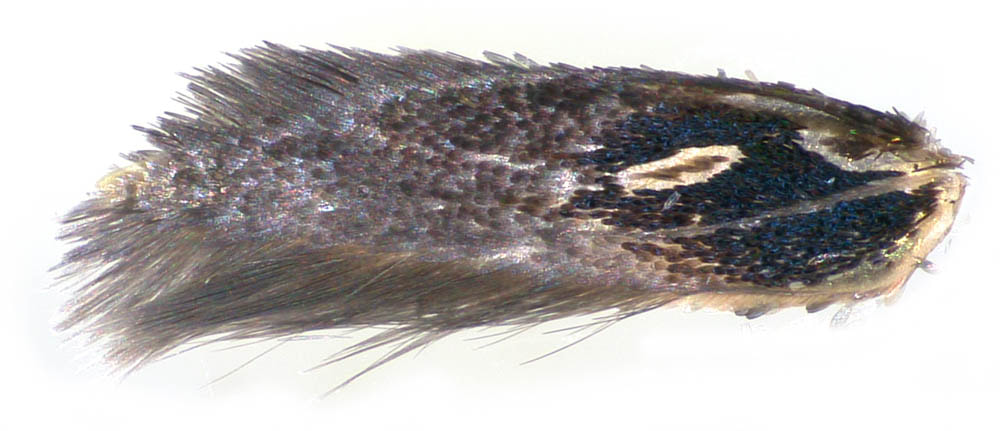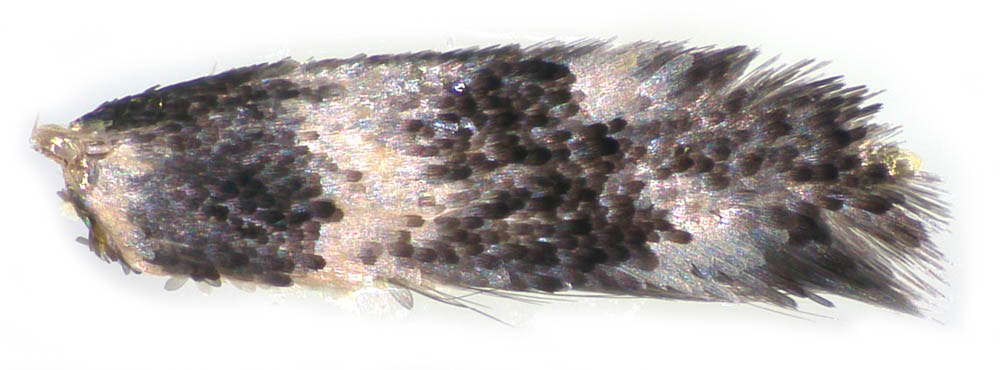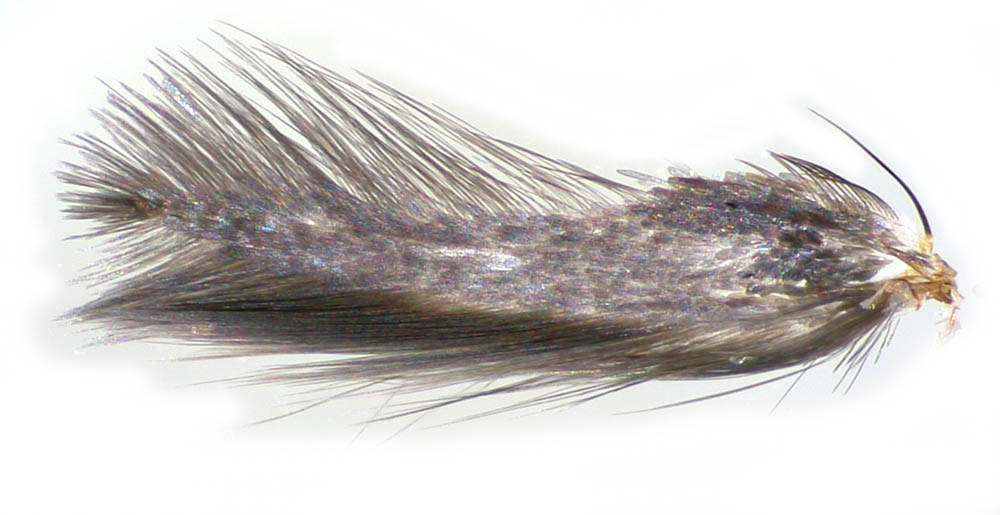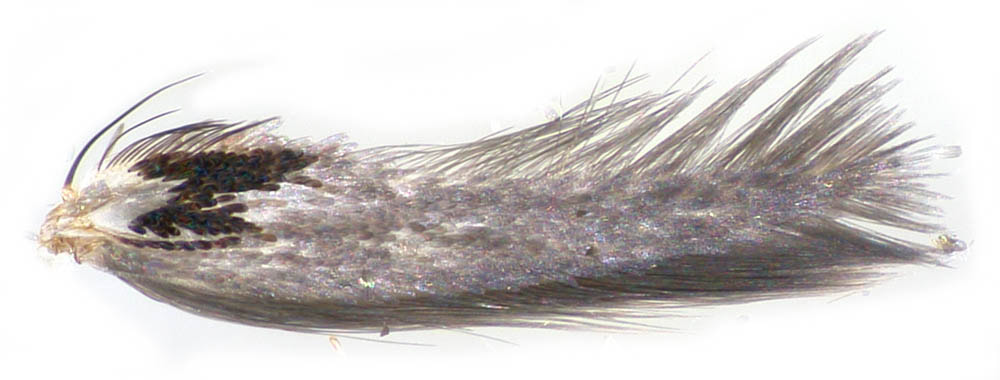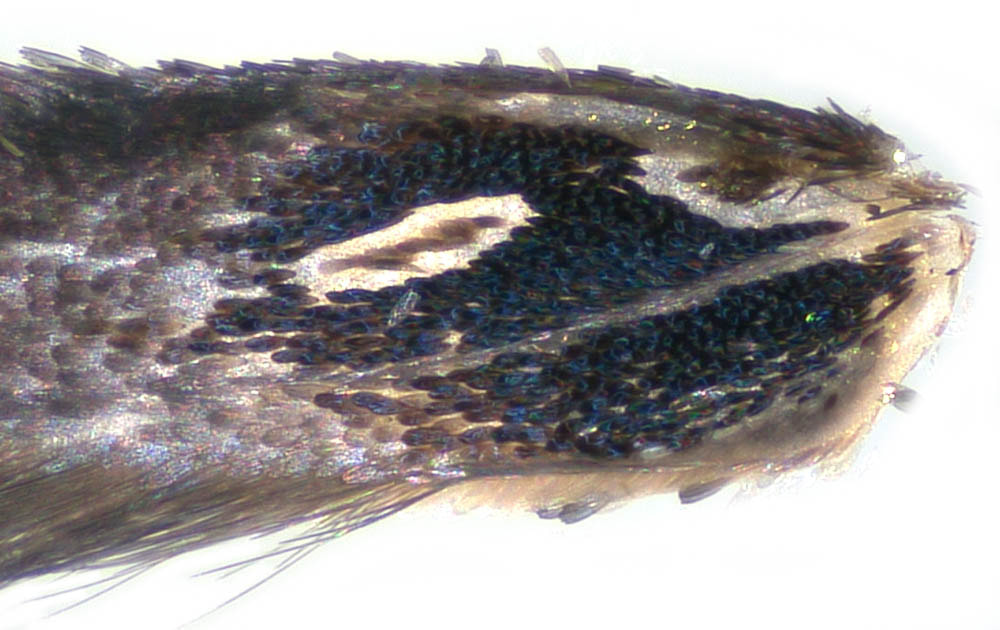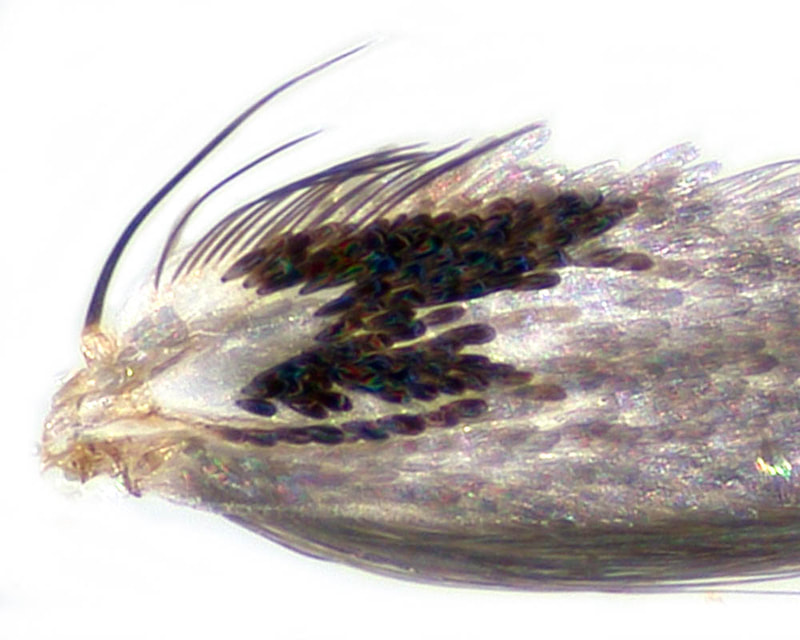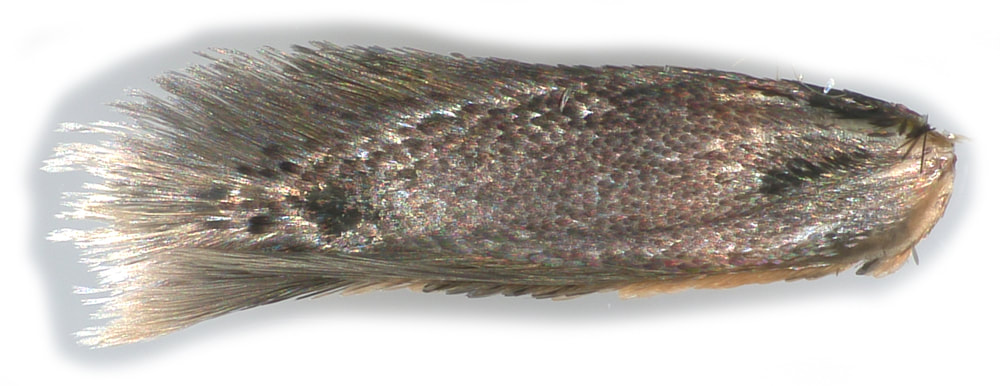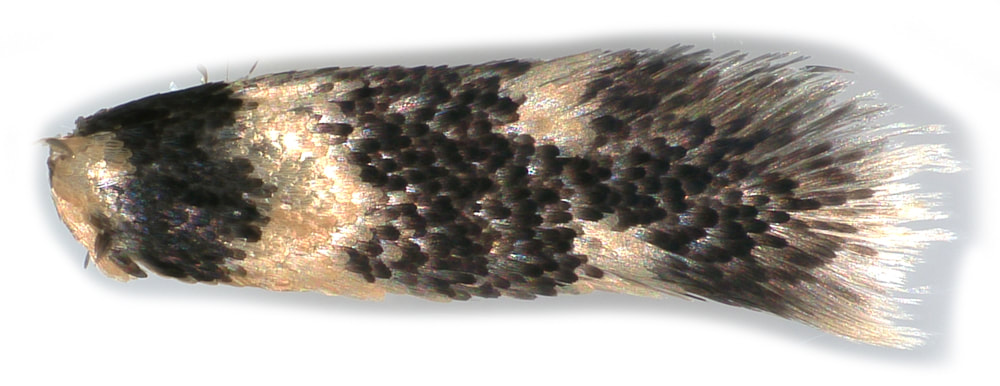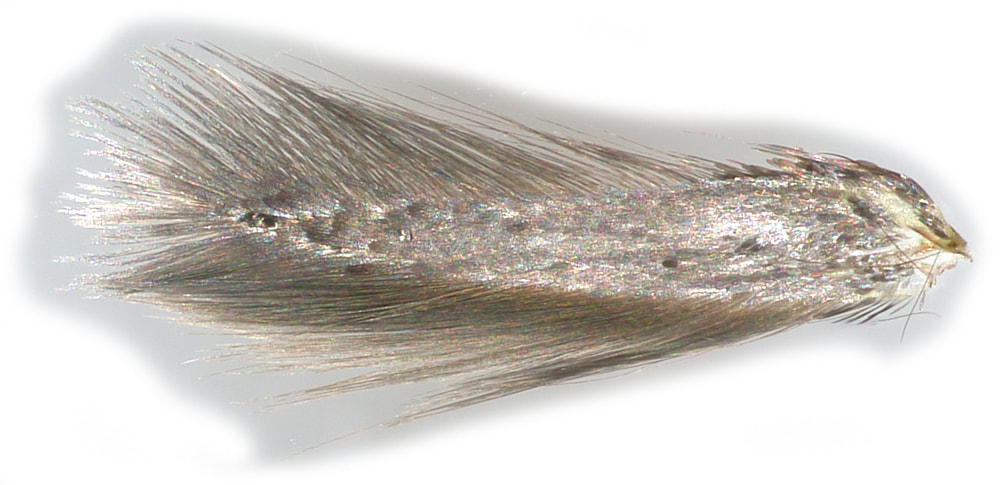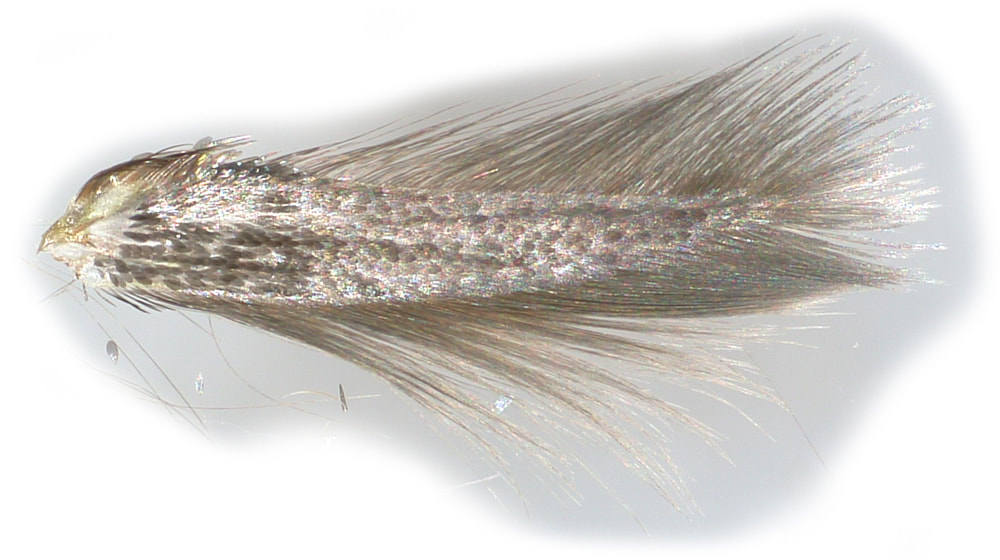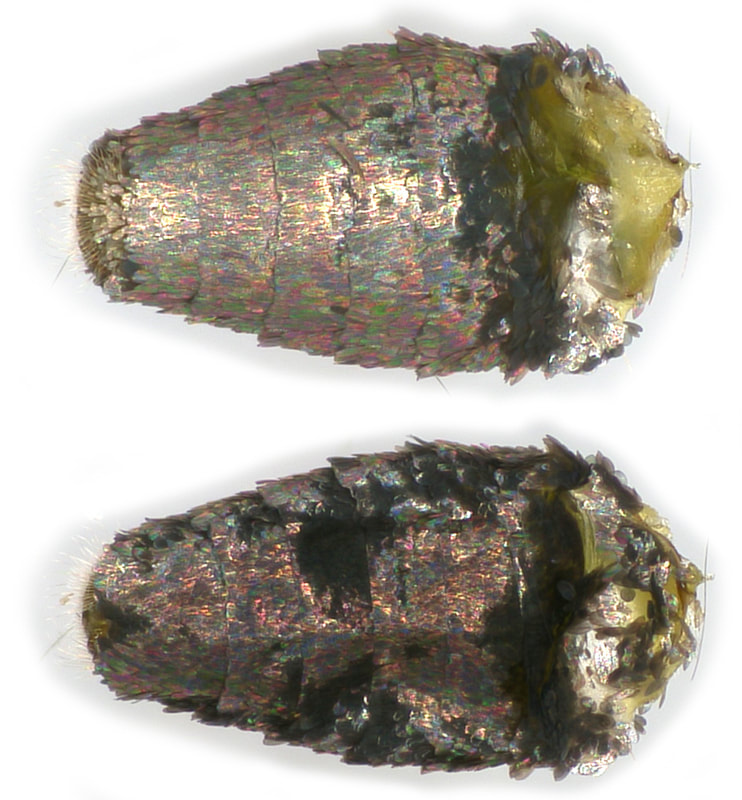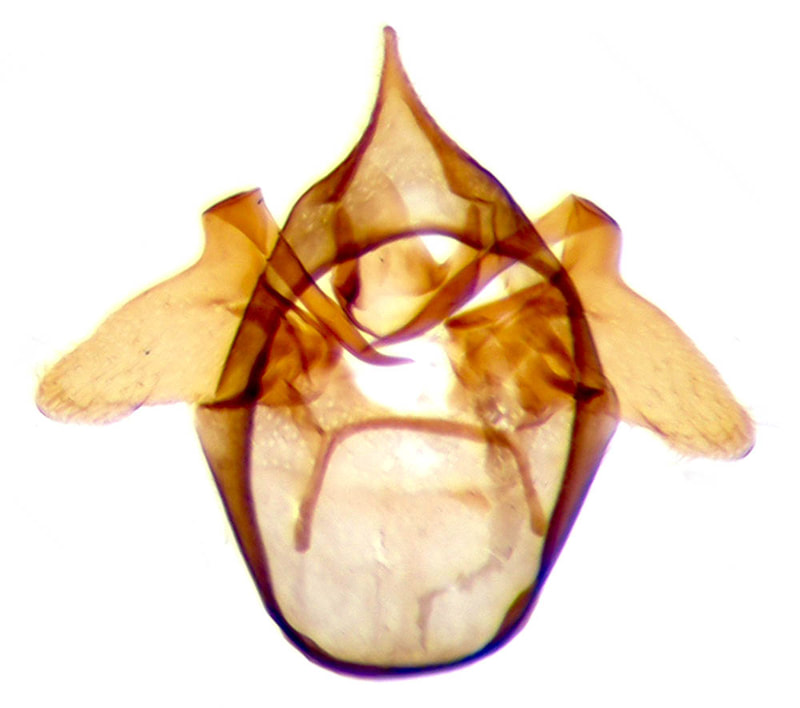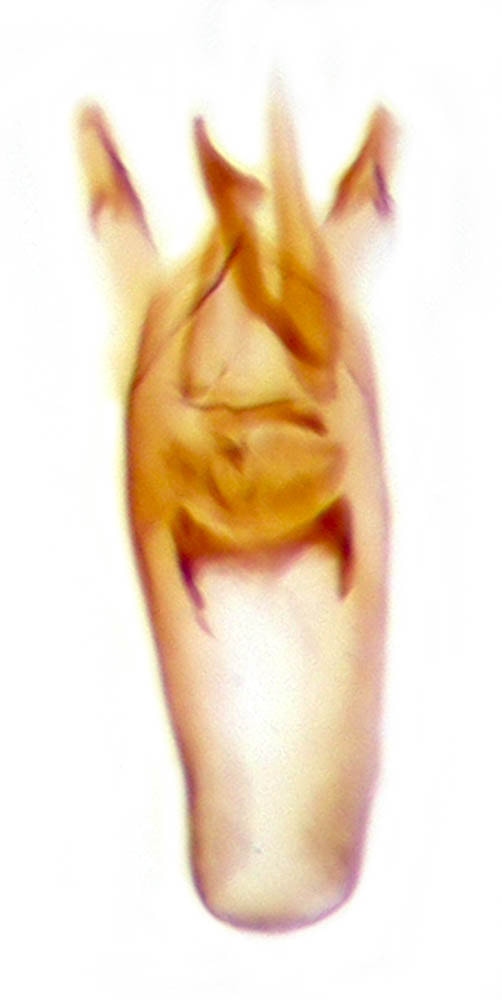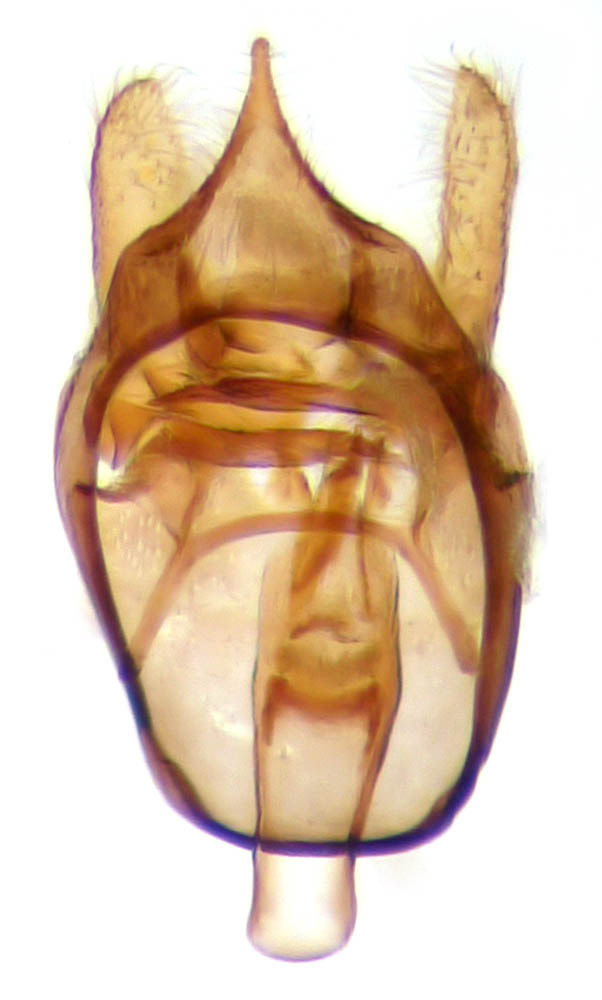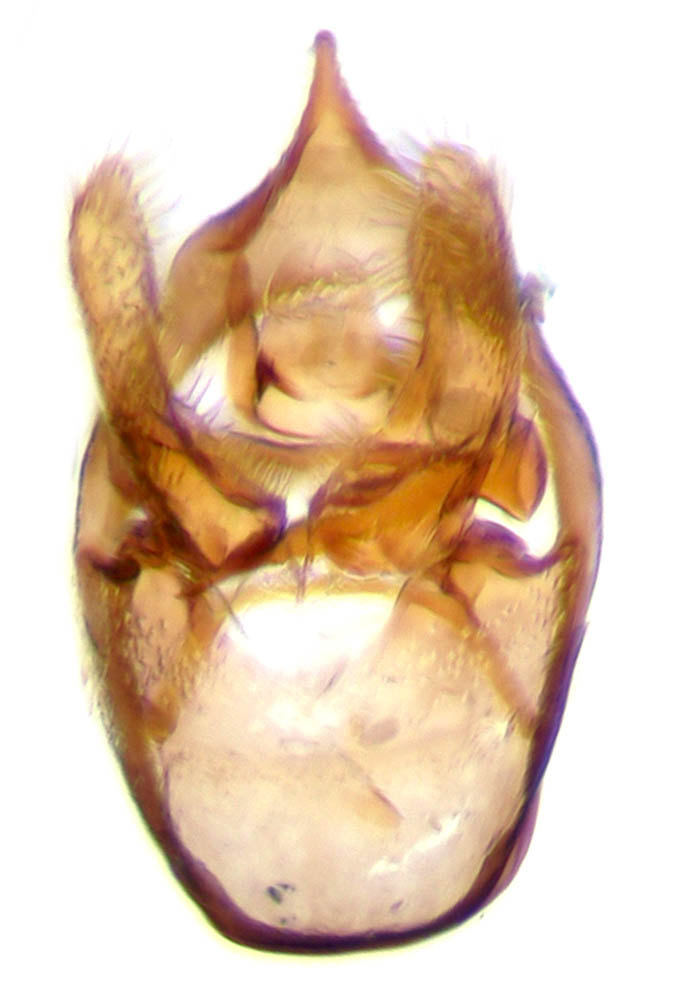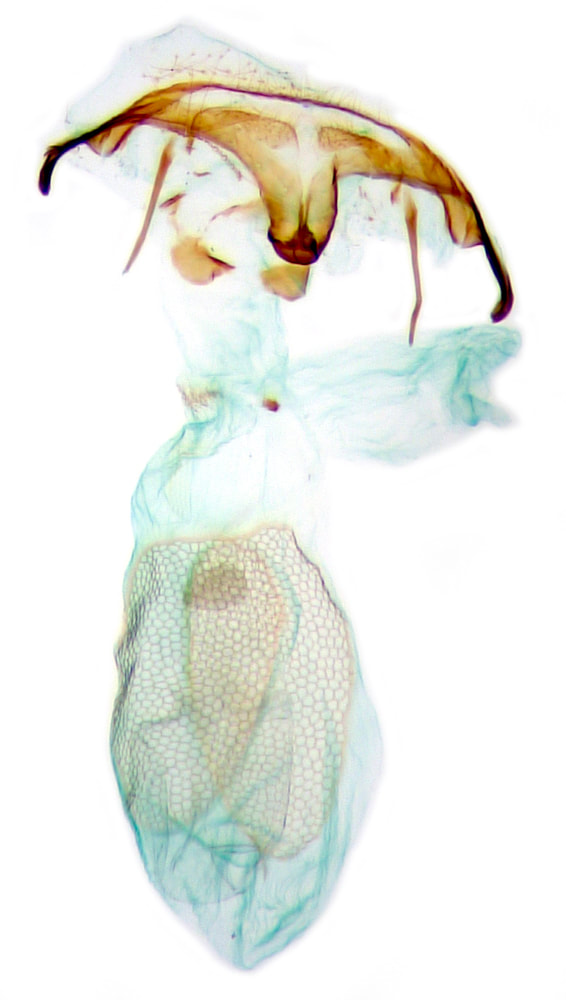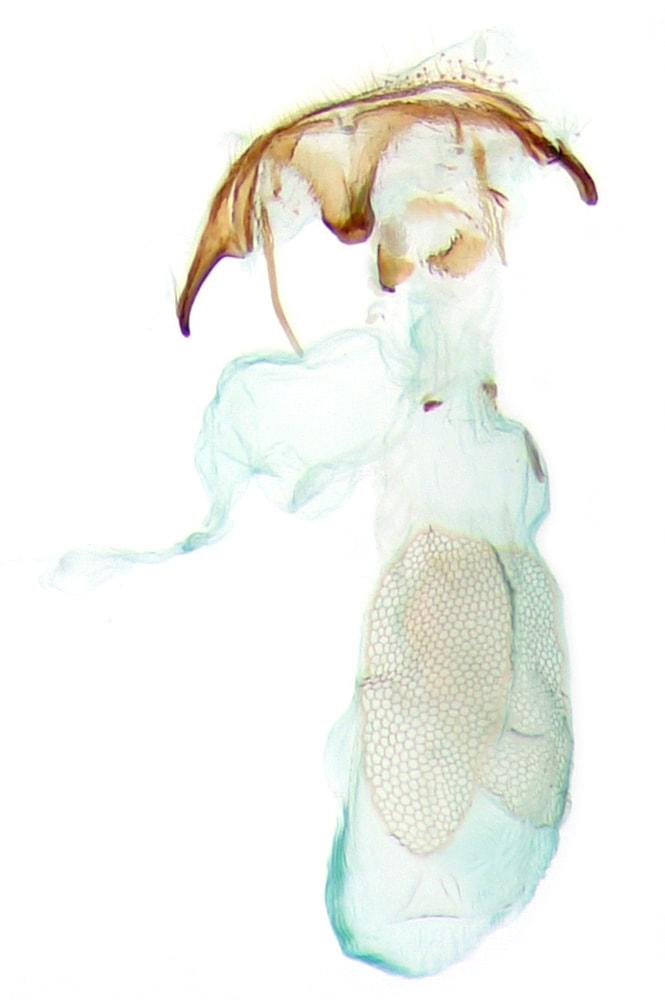04.074 Etainia sericopeza (Norway Maple Dot)
ws: 6-8mm (MBGBI1); bivoltine May, Aug; seed-mine Jun, Sep-Apr; Norway maple (Acer platanoides); NS-A SE England
Synonym: Ectoedemia (Etainia) sericopeza
Synonym: Ectoedemia (Etainia) sericopeza
ID: Forewing with a broad complete whitish antemedian fascia, basal and postmedian costal and dorsal spots > (sub)genus Etainia.
E.decentella is readily distinguished by having a whitish thorax and black head
E.louisella and E.sericopeza require genital determination to distinguish from each other (although possibly the pattern of androconial scales is diagnostic in the male?).
Male genitalia: In E.sericopeza the pseuduncus tapers from its base to a narrow apex; in E.louisella it tapers less and the apex is broader. In E.sericopeza the processes extending anteriorly from the transtilla are long (each ~⅔ the length of the bar between them); in E.louisella they are shorter (each ~ ½ the length of the bar between them).
Female genitalia: Based on comparison of images at Moth Dissection it appears that the main distinguishing feature is in the length of a ventral medial process associated with the anal papillae - about twice as long in E.sericopeza (?)
E.decentella is readily distinguished by having a whitish thorax and black head
E.louisella and E.sericopeza require genital determination to distinguish from each other (although possibly the pattern of androconial scales is diagnostic in the male?).
Male genitalia: In E.sericopeza the pseuduncus tapers from its base to a narrow apex; in E.louisella it tapers less and the apex is broader. In E.sericopeza the processes extending anteriorly from the transtilla are long (each ~⅔ the length of the bar between them); in E.louisella they are shorter (each ~ ½ the length of the bar between them).
Female genitalia: Based on comparison of images at Moth Dissection it appears that the main distinguishing feature is in the length of a ventral medial process associated with the anal papillae - about twice as long in E.sericopeza (?)
§1 Westcliff-on-sea, Essex; 07/09/2021; female; fw 3.6mm; to light; 4th Essex record
§2 Boreham, Essex; 08/09/2023; male; fw 2.9mm; specimen provided by Graham Ekins
All images © Chris Lewis
§2 Boreham, Essex; 08/09/2023; male; fw 2.9mm; specimen provided by Graham Ekins
All images © Chris Lewis
Page published 29/09/2021 (§1) | §2 added 19/09/2023
